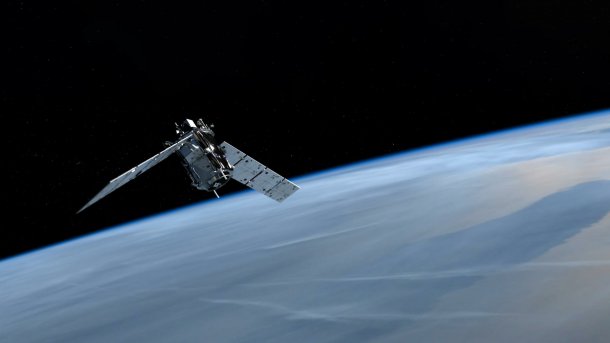"Shock" at NASA: satellite collision was closer than expected
In February, two non-maneuverable satellites narrowly avoided a collision. It was only later that the true extent of the near miss became clear.

Artistic representation of TIMED
(Bild: Johns Hopkins APL/Steve Gribben)
A near-collision between two satellites at the end of February was even closer than previously thought. While it was initially assumed that the inactive Russian spy satellite Kosmos and the US Earth observation satellite TIMED missed each other by around 20 meters, according to new analyses it was less than 10 meters. This was reported by the online magazine Space, citing Pam Melroy from NASA. At a space congress a few days ago, she explained that the findings had scared everyone at the US space agency: "It was a real shock - for me personally and everyone else at NASA." A collision could have had catastrophic consequences.
Fear of a destructive chain reaction
The fact that the two satellites were heading for a near collision was made public by NASA a few hours earlier on February 28. At that time, NASA had assumed that the two would miss each other, but that a collision would generate significant amounts of debris. In addition, a collision would have meant the end of the TIMED mission, which is dedicated to researching the Earth's atmosphere. As recently as February 28, the US space agency announced that the two satellites had missed each other and would not come so close again on their orbits for the foreseeable future. However, it only became clear later how close this really was.
As both satellites could no longer be controlled from Earth, those responsible on Earth had to sit back and wait. If they had collided, a considerable cloud of debris would have formed, consisting of fragments of various sizes hurtling around the earth at tens of thousands of kilometers per hour. They would then have just been waiting to "punch a hole in another spacecraft, potentially putting people in danger", Space Melroy continued.
With the growing number of satellites orbiting the Earth, the risk of such near-collisions is also increasing. Just one of these could be enough to set off a chain reaction in which the debris subsequently sweeps entire satellite orbits clean. This is another reason why there are repeated warnings about the dangers of space debris, i.e. inactive and no longer maneuverable objects in orbit. However, the practice of destroying satellites in space for test purposes, which also creates such clouds of debris, is also criticized particularly loudly. Most recently, such a test by Russia even endangered the International Space Station ISS. Because these clouds of debris can at least be avoided, calls for an end to such tests are becoming ever louder.
(mho)